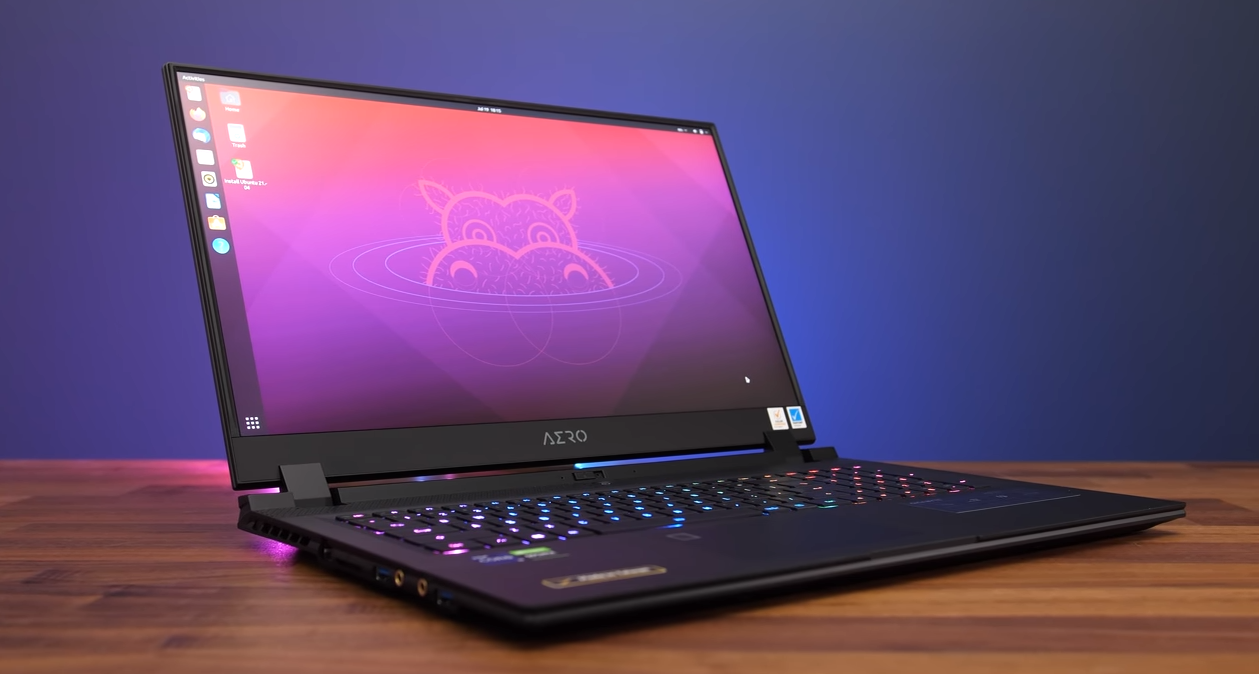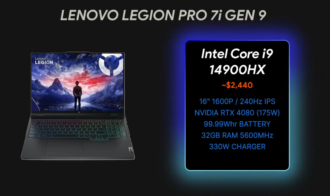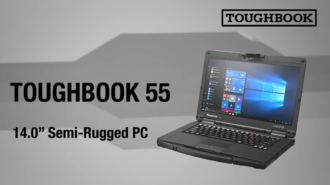Gigabyte Aero 17 Review
- 1 Gigabyte Aero 17 Specs
- 1.1 Design
- 1.2 Price
- 1.3 Display
- 1.4 Application
- 1.5 Performance
If you’re reading this article on a 13-inch laptop screen and straining your eyes, you may be one of the many people who recently began working from home and quickly learned that portability means nothing if you go blind on a little screen. The Gigabyte Aero 17 offers the solution with its stunning 17.3-inch UHD 4K HDR 400 display and excellent performance. Forget that the laptop is equipped with Nvidia’s excellent GeForce RTX 2070 Super Max-Q GPU and Intel’s latest 10th-generation, 8-core, Core i7-10875H Comet Lake H CPU.
Gigabyte Aero 17 Specs
| Price | £2,700 |
| Screen | 17.3in 4K 60Hz IPS |
| Intel Core | i7-10875H CPU |
| RAM | 16GB DDR4 |
| SSD | 512GB |
| OS | Windows 10 Home 64-bit |
| Dimension | 15.6 x 10.6 x 0.84 inches |
| Networking | Killer ethernet E2600, Killer AX1650 WiFi 6 |
| Warranty | 2yr RTB warranty |
PROS
- Incredible processing speed
- A quick graphics processor
- Sharp, colourful 4K display Solid build quality and connectivity options
CONS
- Not the most fashionable notebook
- average battery life
- Extremely costly
Design
The Gigabyte Aero 17 HDR is constructed out of dark, matte aluminium. It features a clever grille pattern of triangles directly over the keyboard and elegant air vents down most sides. It’s tasteful and businesslike; you’ll only find RGB LEDs on the keyboard. Despite its apparent brilliance, problems persist. Poor construction, for one; the wrist rest wiggles about too much, and pressing on the back of the screen causes a slight distortion of the desktop.
The Aero isn’t fragile, but buying a case to safeguard it is still intelligent. The machine has some sharp edges and unsightly seams all over the exterior. The Aero’s weight of 2.5 kilograms and thickness of 21.4 millimetres are outstanding for a 17.3-inch computer.
The machine’s connectivity is sufficient since it features three USB 3.2 ports, a Thunderbolt/USB Type-C connection, an HDMI connector, a mini-DisplayPort, and a card reader, in addition to the usual audio jacks and a mini-SD card slot. Dual-band Wi-Fi 6 and Gigabit Ethernet are built into the Aero, with both bands coming from gaming company Killer. Additional Thunderbolt ports, a webcam with infrared capabilities, and 2.5Gbps Ethernet would have been excellent.
Price
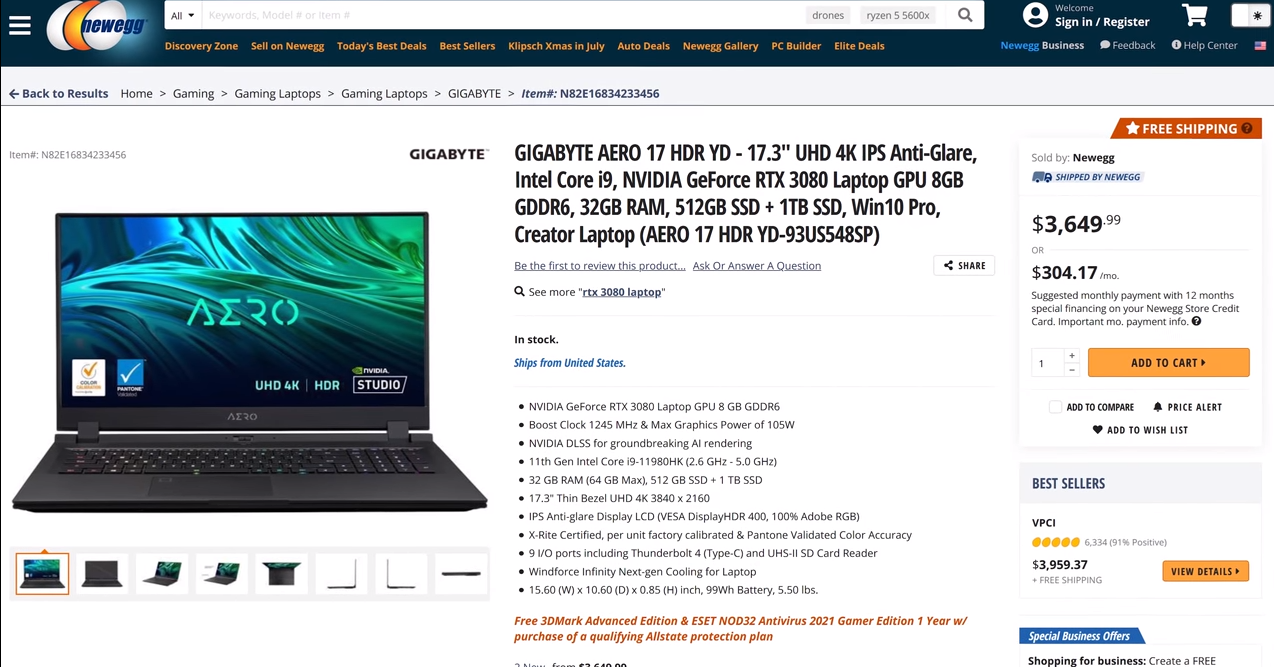
The Gigabyte Aero 17 (2021) has a starting price in the US of $1,599 (about £1,170 / AU$2,070; UK/AU pricing and availability are still unknown). The base model Aero 17 features a 17.3-inch, full-HD, 300-hertz display, 1TB SSD, and Intel Core i7-10870H processor with Nvidia GeForce RTX 3060 Max-Q graphics.
The price jumps dramatically from there, with the top-tier setup (the one we tested) going for an eye-watering $3,699 (about £2,700 / AU$ 4,790). This model has a 17.3-inch 4K HDR400 OLED display, 64GB 2,933Hz DDR4 memory, two 1TB SSDs, an Intel Core i9-10980HK processor, Windows 10 Pro, a Pantone factory calibration for 100% Adobe RGB, and a display that runs at 60 frames per second.
Display
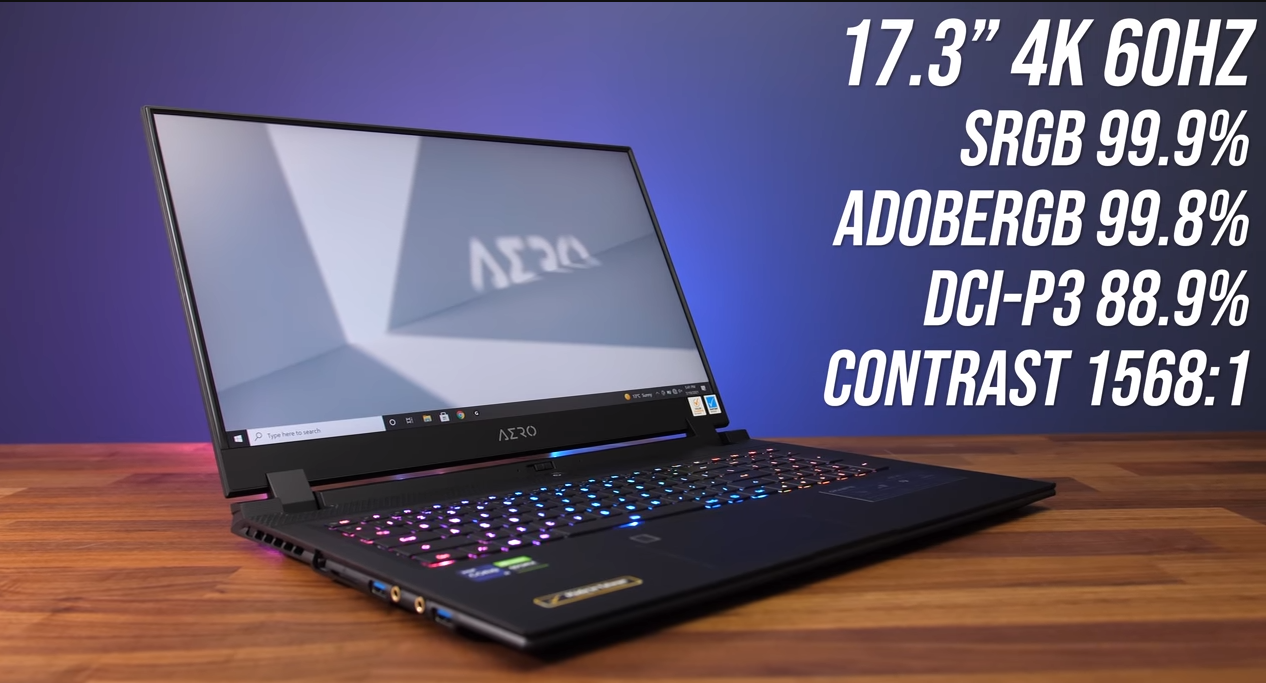
Whether you need to see fine details, stream 4K media, or use multiple tools simultaneously, the 17.3-inch display will not disappoint you. X-Rite Pantone has verified and calibrated the screen. A staggering 1.47 Delta E is the average for the Gigabyte. The panel displayed 86% of the DCI-P3 space at 108% brightness, 99% of the Adobe RGB space at 152%, and 99% of the sRGB area at 152%. Those numbers indicate that the Aero can faithfully reproduce colours within the sRGB and Adobe RGB colour spaces. Therefore, you are equally at home in either environment. That DCI-P3 value is also suitable for HDR applications. The Aero has an off-kilter colour temperature of 6117K, which isn’t a significant issue.
The dark value of 0.39 nits is respectable, while the brightness level of 541 nits is very high. With a contrast ratio of 1387:1, the colours become incredibly vivid and striking. It’s bad the black level isn’t stronger; that would have added another layer of complexity. The brightness only varied by a maximum of 7% throughout the panel, which is twice as good as most laptops.
This screen is fantastic for the office but subpar otherwise. The panel is bright enough and follows DisplayHDR 400, but its black level and contrast ratio aren’t excellent enough to give HDR material much of a boost. This is true of all HDR-capable laptops; the Aero is the best of the bunch.
Application
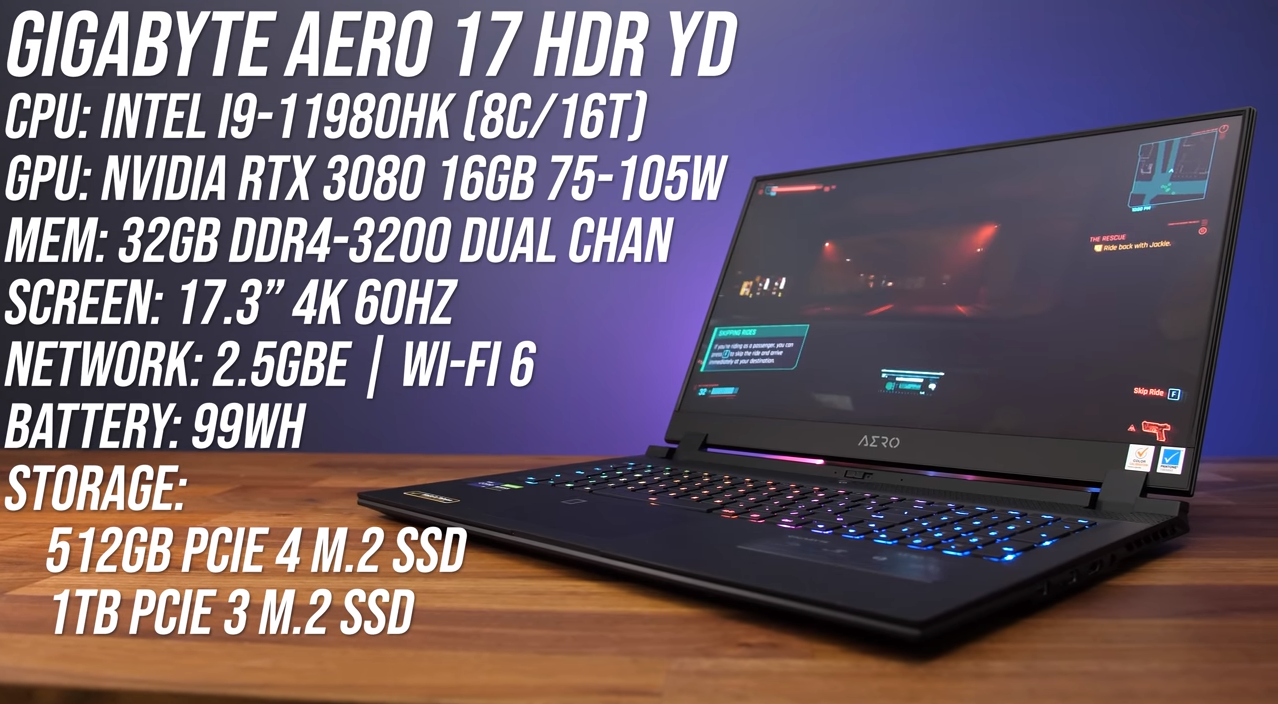
We did not anticipate finding much bloat on the Gigabyte Aero 17 (2021), especially given its premium price and intended audience. Windows 10 comes with the usual preinstalls, such as Microsoft Office and Microsoft Edge, but nothing as annoying as McAfee, and we didn’t even see any of the pop-ups near the notification centre that are becoming increasingly common on some laptops.
The Gigabyte control centre and Microsoft Azure AI are the most notable software installations. From tweaking your GPU’s performance to updating your drivers, you can do it all from the comfort of the control centre app. You can also change or turn off the RGB lighting here.
Performance
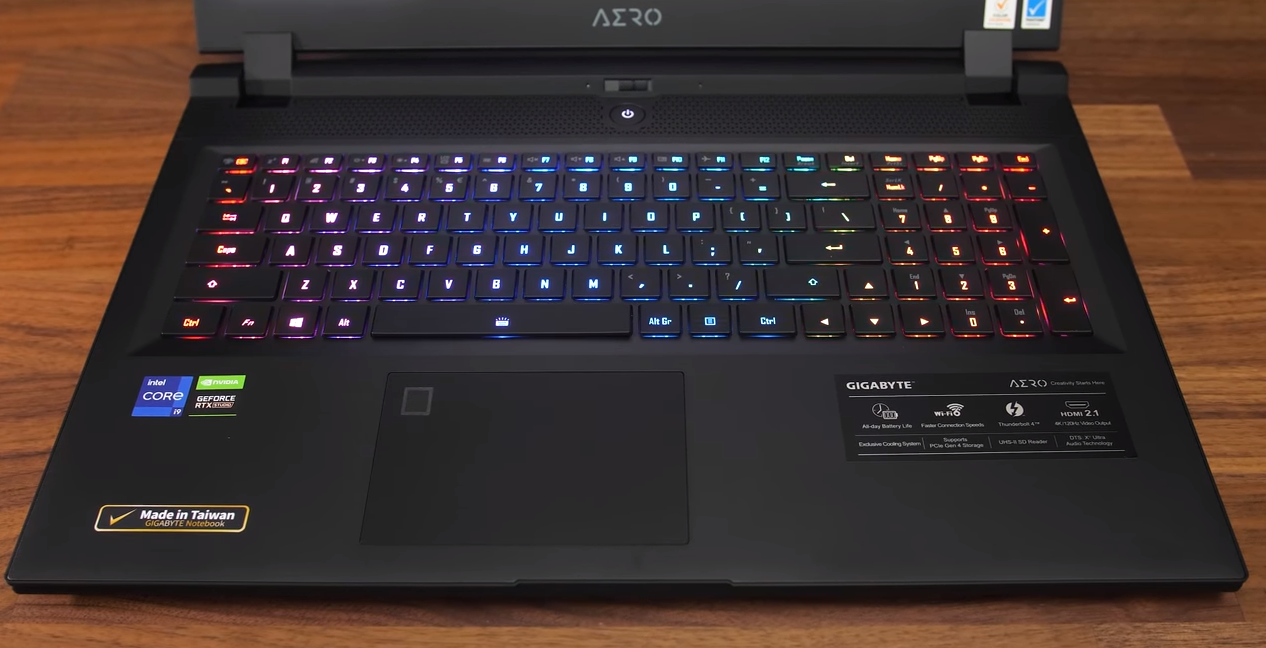
When you hear the words “RTX 3080,” you might have some ideas about what this GPU can do. It would be best to throw that idea out the window. This is not the same desktop RTX 3080 everyone wants but can’t find anywhere. This GPU is different in many ways, and our Jackie Thomas has a great explanation that breaks down the differences between desktop and mobile RTX GPUs.
If you want to know what those changes are, you should check out that explainer. Even with all that, the RTX 3080 with Max-Q in the Gigabyte Aero 17 (2021) is the best speed you’ll find in a laptop for the creative class. Compared to one of our most suggested mobile computers from last year, the HP ZBook Create G7, the Aero 17 is the clear winner, and by a large margin.

